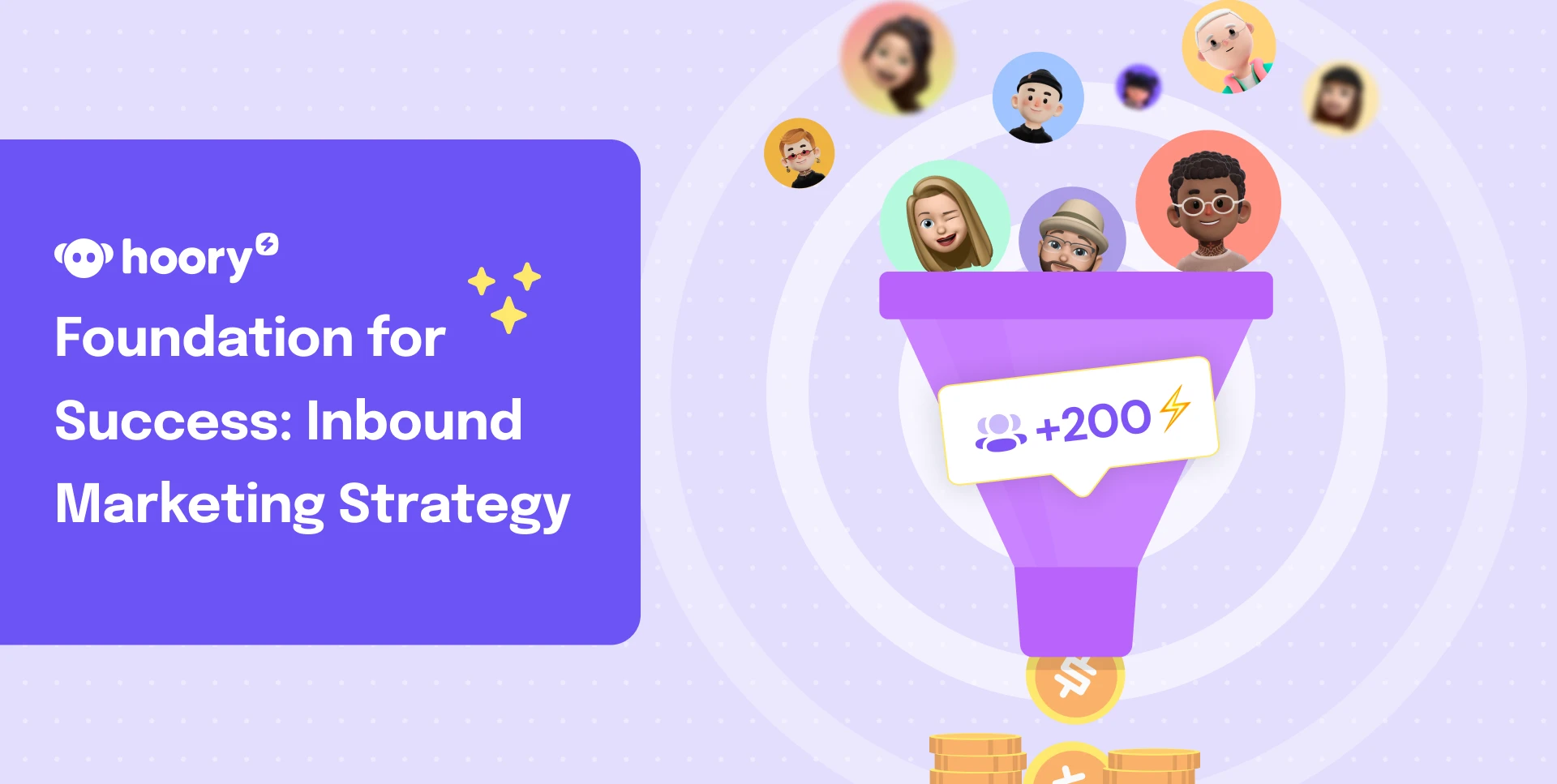Strategic Lead Generation: How to Create a Winning Inbound Campaign?
• Customer Support
• FastBank

In the world of digital marketing, the quest for effective lead generation strategies is a constant pursuit. In fact, 61% of marketers consider generating traffic and leads as their biggest challenge.
The truth is that successful lead generation begins when you transition from product-selling to solution-selling.
Follow along as we explore the details of this transformation and uncover the steps to crafting compelling inbound campaigns.
What is Inbound Lead Generation?
Think about the last big purchase you made. You probably had a problem or a need, did a little bit of research to figure out how you could fix it, and made the purchase from there. This is a classic example of inbound marketing.
Inbound marketing involves generating organic leads for your business through proactive marketing techniques such as SEO, PPC, email, and content marketing.
As for inbound lead generation, it's the strategic process of attracting potential customers to a business through targeted and valuable content, thereby fostering engagement and building trust organically.
Inbound lead generation is a non-invasive form of marketing based on providing the right content at the right time. It aims to attract users to your website using content that moves them along the buyer journey. In other words, instead of going to the users, you let the users find you.
Inbound marketing encompasses many different marketing tactics, including content marketing, SEO, marketing automation, and more.
Inbound vs Outbound
In inbound lead generation, businesses naturally attract customers by offering them valuable content and solutions they're already interested in. It's like setting up a cozy cafe and inviting people in with the promise of delicious coffee and friendly conversation. You do this by creating helpful blog posts, engaging social media posts, and useful emails that answer their questions and solve their problems. This approach focuses on building trust and relationships rather than punching sales pitches.
On the flip side, outbound lead generation is more like going out and knocking on doors to find potential customers. You're actively reaching out to people, whether they're interested or not, with things like cold calls or mass emails. It's like trying to sell something to someone who might not even be thinking about buying.
While outbound methods can sometimes bring in leads faster, they can also annoy people if they feel like they're being bombarded with unwanted messages.
In contrast, inbound marketing tactics not only generate 54% more leads than traditional paid methods but also cost 62% less per lead compared to outbound marketing.
Stages of Inbound Lead Generation
There are four main stages to inbound marketing:
-
Attract: In this initial phase, you must employ compelling and relevant content to attract users to your website. The content can be in many forms, such as blog articles, social media videos, etc. Focusing on the quality of the content is crucial as that's what helps us turn a stranger into a regular website visitor.
-
Convert: Moving on to the Convert stage, you must provide more content aimed at solving the user's problem while gathering more information about them. Typically, this involves downloadable content accessed via a form, transitioning a visitor into a lead.
-
Close: The Closing stage includes lead nurturing, lead scoring, marketing automation, and relevant content to guide the user toward purchasing and progressing through the buyer journey. This is where a lead evolves into a customer.
-
Delight: Finally, inbound marketing doesn't end with the sale. In the Delight stage, you must continuously prioritize satisfying and delighting the customer. By employing inbound techniques, you can foster loyalty, as it's much easier to keep a customer than to earn a new one.
Foundation for Success: Crafting an Inbound Campaign
Crafting a winning inbound campaign is no simple feat, as you can guess already. It requires thorough planning, a deep understanding of your audience, and a strategic approach that aligns with your business objectives.
If we were to organize a to-do list, it would start by defining your target audience with precision. Who are they? What are their pain points, desires, and preferences?
The next step is to create compelling content that resonates with your target audience. Content is the main anchor in this topic, and it's the way it should be, as quality content lies at the core of any successful inbound campaign. It serves as the bridge that connects your brand with your audience.
Whether it's engaging blog posts, informative videos, or interactive social media content, focus on creating valuable, relevant, and authentic material that speaks directly to your audience's interests and addresses their requests and concerns.
Additionally, explore various distribution channels to amplify your reach and connect with your audience across multiple touchpoints.
Inbound Lead Generation Tips: From Basic to Advanced
In this section, we'll explore the top techniques to elevate your inbound lead generation efforts, empowering you to attract, engage, and convert prospects into loyal customers.
-
Predictive Lead Scoring: By assessing various factors such as demographics, behavior, and engagement patterns, predictive lead scoring helps you prioritize your efforts on leads with the highest potential for conversion. In other words, predictive lead scoring analyzes historical data to identify the most promising leads.
-
AI-Powered Content Personalization: By delivering highly relevant and personalized content experiences to each user, AI-powered content personalization increases engagement, encourages longer website visits, and drives more conversions.
-
Account-Based Marketing Campaigns: This approach involves targeting high-value accounts with personalized messaging and content tailored to their needs and interests. Account-based marketing (ABM) campaigns focus on quality over quantity, allowing businesses to concentrate on the accounts most likely to generate significant revenue.
Now, let's convert these into an actionable to-do list:
-
Remember, content is king, but context is queen! Create high-quality, value-driven content tailored to each stage of the buyer's journey. Each piece of content should serve a specific purpose in guiding your audience from awareness to consideration and conversion.
-
Arm your content with compelling CTAs. These seemingly small yet mighty prompts guide users toward desired actions. Whether it's subscribing to a newsletter, downloading a resource, or visiting a specific web page, CTAs are what turn mere observers into converted users. So, strategically placing the CTA buttons within your content is essential.
-
Design user-friendly forms that strike the right balance between collecting essential information and providing a smooth experience. Keep forms concise and focused to avoid overwhelming your audience. Pier these forms with well-crafted landing pages that provide relevant context and reinforce the value proposition of your offer.
-
Implement marketing automation tools to streamline repetitive marketing tasks, nurture leads, and deliver personalized experiences. Marketing departments can automate repetitive tasks such as email marketing, social media posting, and even ad campaigns.
Future Trends and Innovations
Now, let's see what the future has in store for inbound lead generation. Here are tools and techniques to put your brand in a good light in front of prospective customers.
1. Short-Form Video Content
The rise of short-form video content has become a cornerstone in capturing audience attention and driving engagement. Platforms like TikTok and Instagram Reels have become fertile grounds for businesses to creatively showcase their products or services, driving inbound traffic.
2. Increased Use of AI Assistants and Chatbots
Integrating AI assistants and chatbots is another powerful strategy to boost customer interactions. These intelligent systems provide immediate responses to inquiries, qualify leads, and offer customized recommendations around the clock. A perfect example of a similar tool is Hoory AI. Hoory AI's versatile automation tools engage prospects through personalized messaging, ensuring a high and lasting CSAT score.
3. Blockchain Technology for Increased Security
With blockchain technology instilled in your inbound lead generation efforts, you can offer increased security and transparency to your audience. This assures them of the confidentiality and authenticity of their information, ultimately fostering stronger relationships between businesses and potential customers.
Bottom Line
Crafting a successful inbound lead generation campaign requires a strategic approach that combines creativity, data-driven insights, and a deep understanding of your target audience.
However, it's essential to remember that success doesn't happen overnight - you must continually experiment, optimize, and be consistent in your efforts to achieve sustainable results.

























